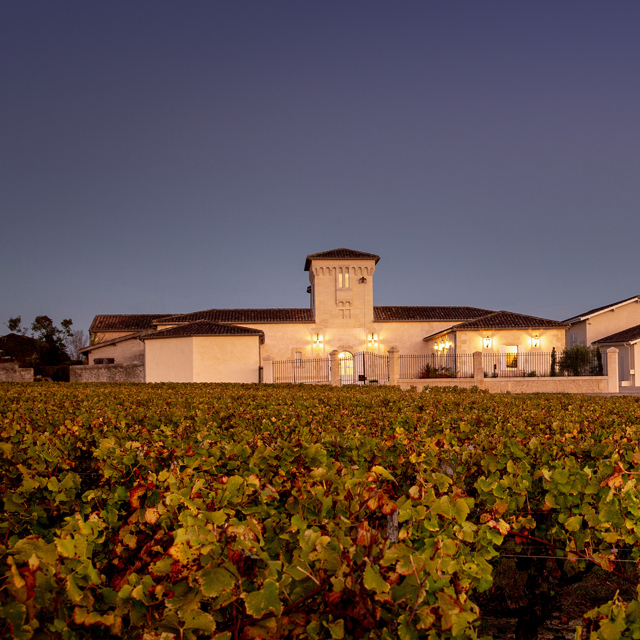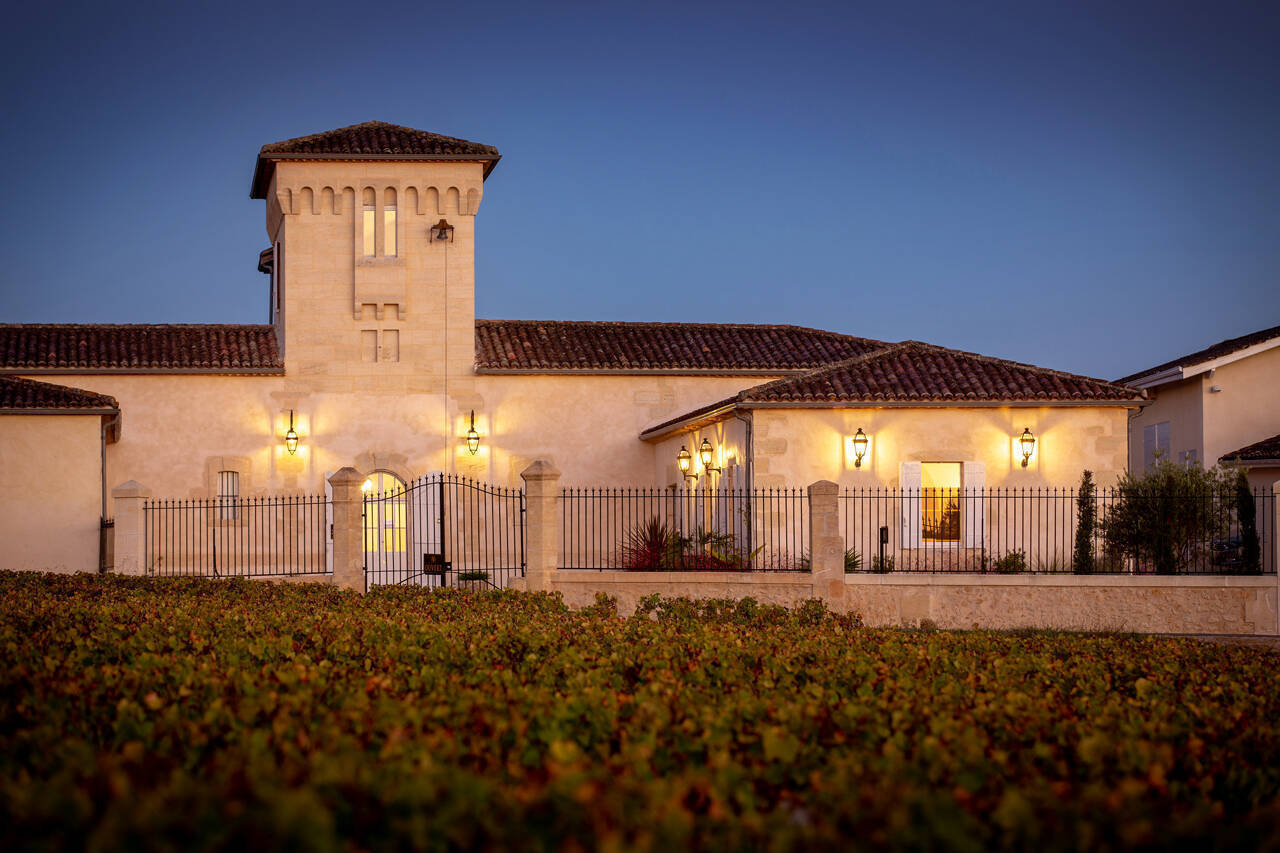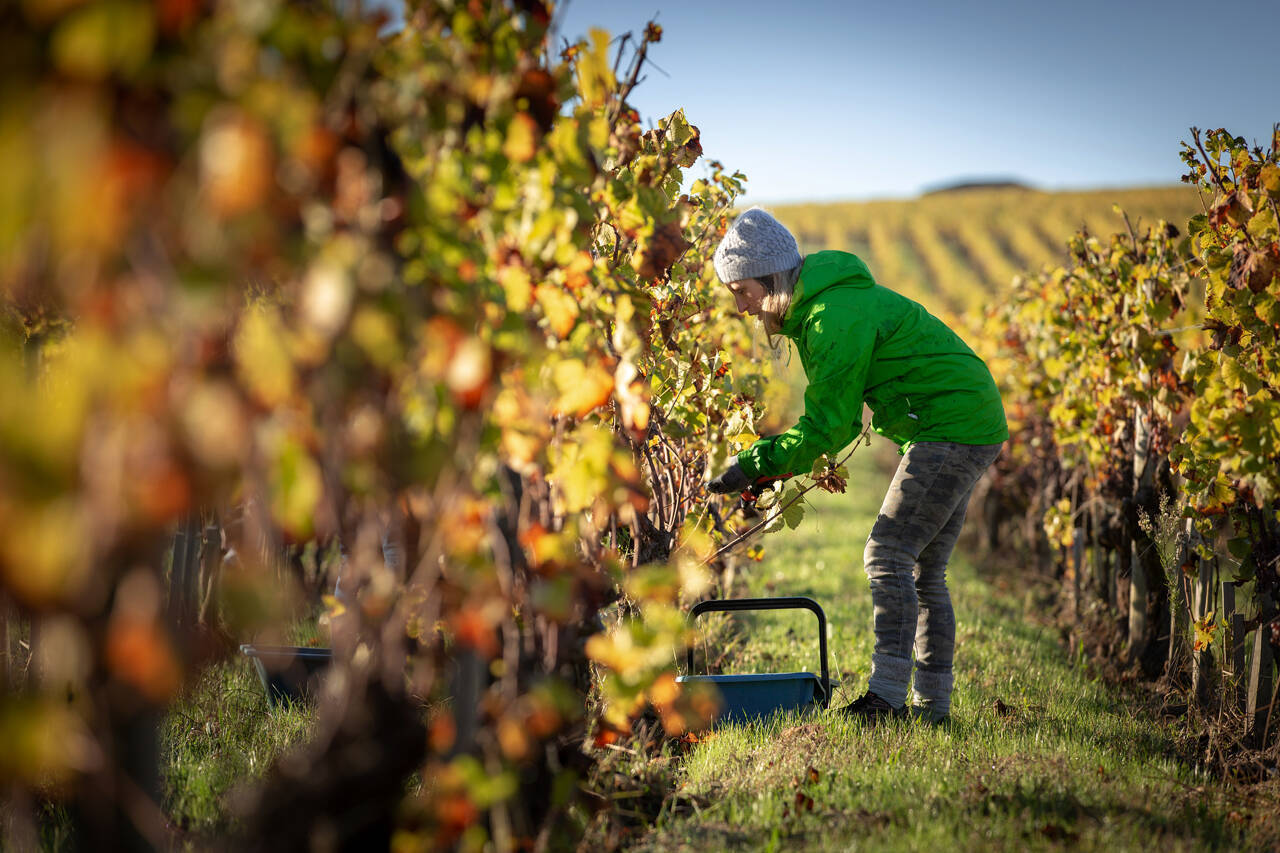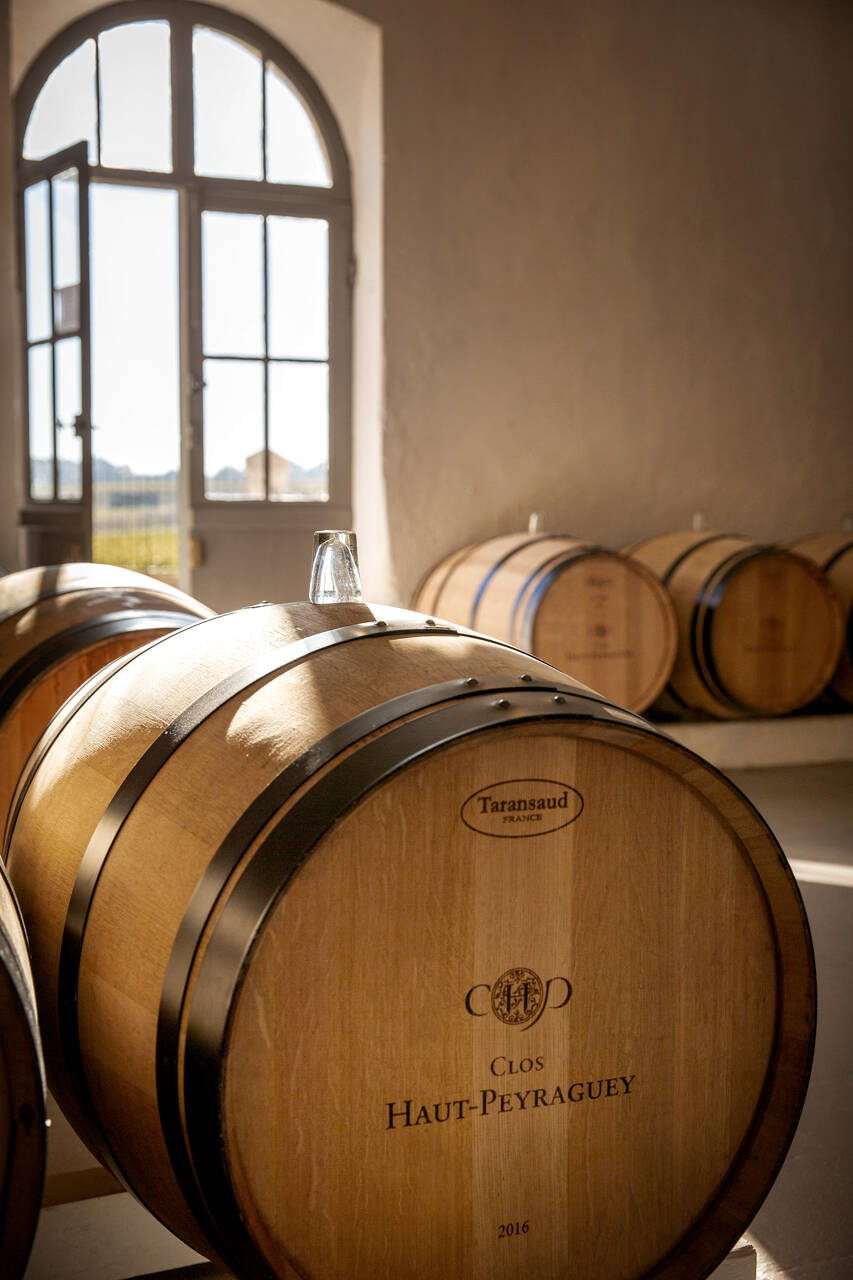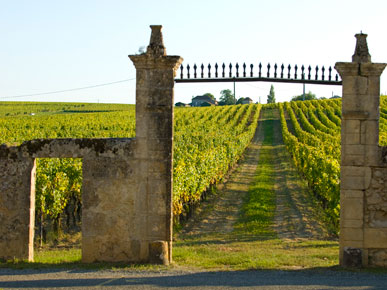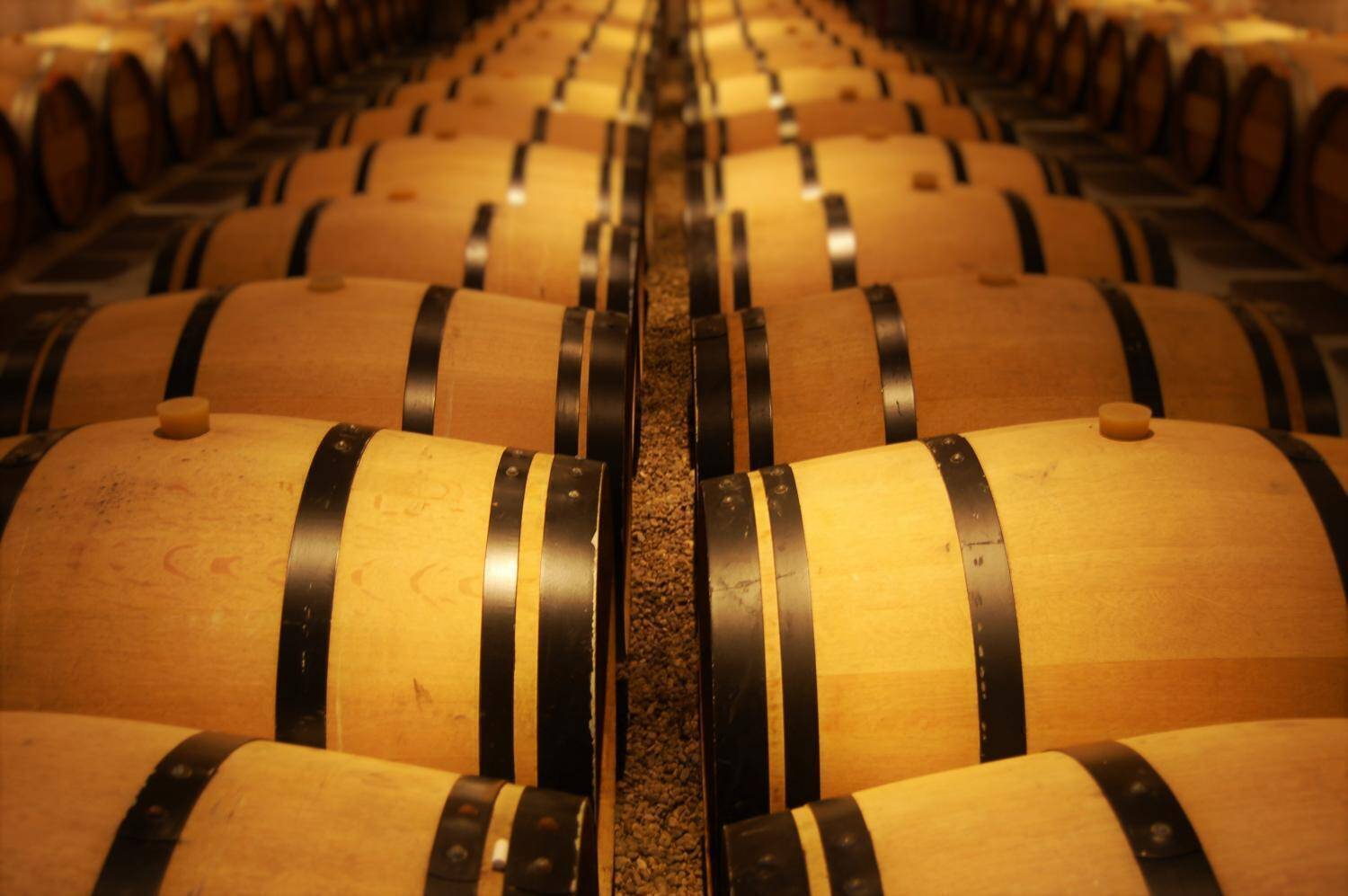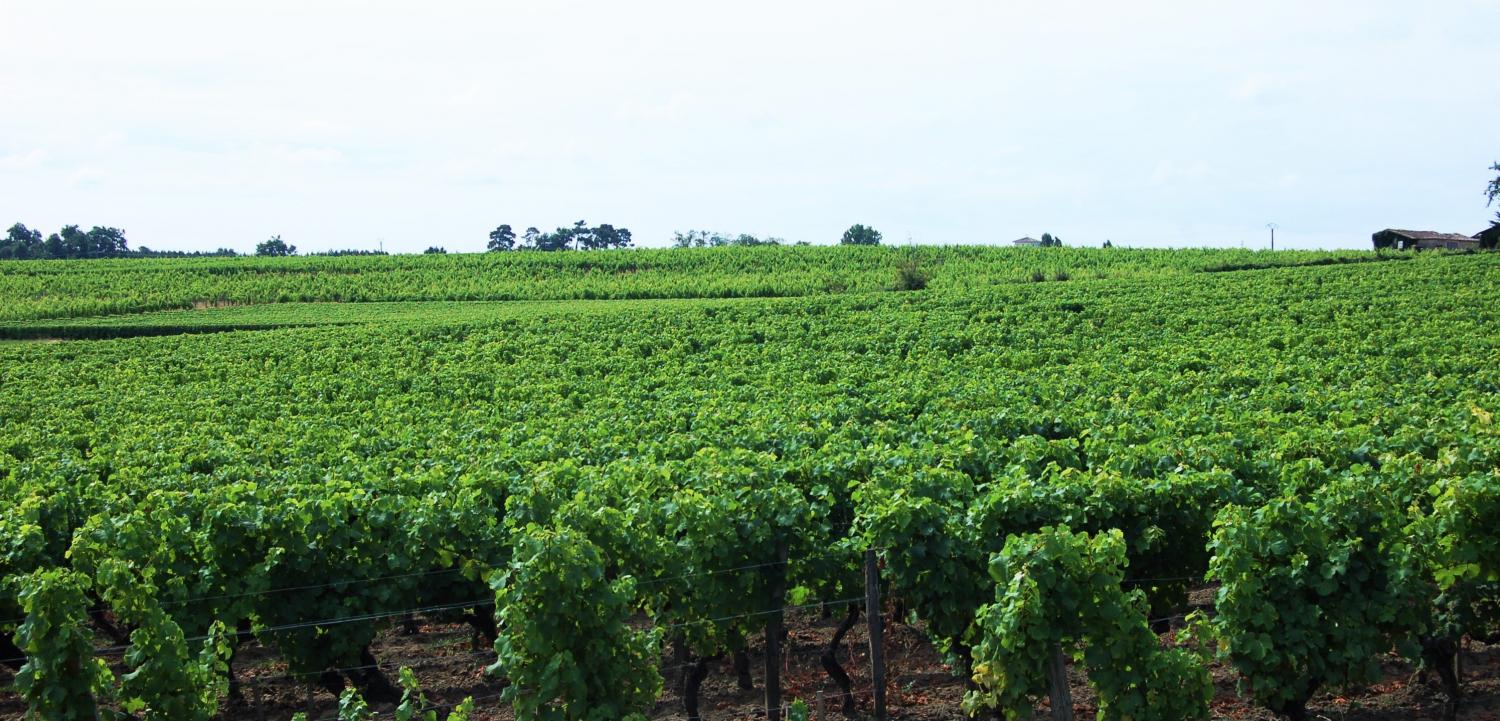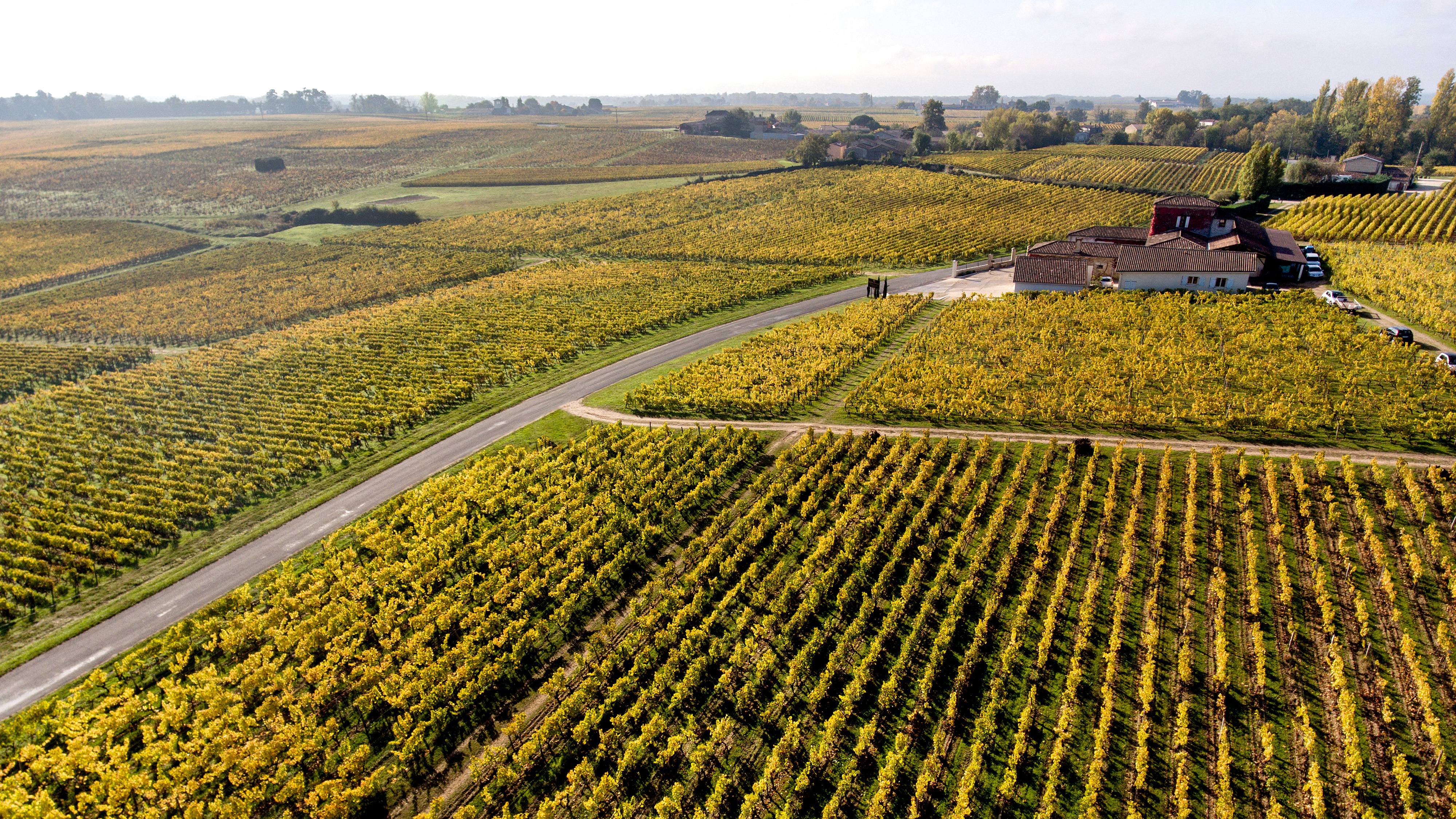Anecdotes about the domain
With 12 hectares - including 8 in a single block - near the Ciron, a tributary of the Garonne, Clos Haut-Peyraguey's vines are planted between 50 and 80 meters above sea level on complex gravelly-sandy soils that are ideal for Semillon, the grape variety that reigns almost unchallenged in the Clos vineyard, with a twentieth of Sauvignon. In the vineyards, we use integrated farming methods. Replanting is done by complantation, i.e. by replacing vines in the rows rather than by whole plots. Once the famous botrytis (or noble rot) has appeared on the bunches of grapes, harvesting is carried out by hand in several passes, to retain only the grapes with the highest concentration of sugar and aroma. Batch fermentation takes place for fifteen to twenty days in temperature-controlled vats at 22°C. In the cellar, after slow, gradual pressing, fermentation and ageing take place in new or old oak barrels, the proportions varying according to the richness of the musts. Ageing lasts around 20 months in 20% new barrels. Bottling at the château takes place 22 months after the harvest. CLOS HAUT-PEYRAGUEY: A DIVERSITY OF SOILS, A UNIQUE TERROIR. The Clos Haut-Peyraguey vineyard boasts gravelly-sandy soils on a clay subsoil, soils with clay veins running through them, and sandier soils. This diversity is directly linked to the quality of the Clos terroir. These different soil profiles and the differences in character they bring to the grapes (structure, fatness, power, combined with a great deal of finesse, complexity and elegance) play an undeniable role in the aromatic richness and complexity of Clos Haut-Peyraguey wines. The controlled planting of grape varieties in the vineyard enables us to identify the quality of the plots and helps us to manage the grape harvest, all within the framework of perfectly integrated agriculture. The northeastern exposure of most of the plots ensures plenty of sunshine, which, combined with the morning fog, is responsible for excellent ripening of the grapes and the development of botrytis cinerea, the famous noble rot that gives Clos Haut-Peyraguey Sauternes its unique character and distinctive aromatic notes. IN THE CELLAR: PRECISION VINIFICATION AND AGEING. Pressing takes place in the harvest reception room, using 2 pneumatic presses. Pressing cycles are long and progressive, to extract the complex aromas contained in the grapes. The juice flows by gravity into an underground tank. Once the grapes have been pressed, a light settling is carried out, under temperature and must turbidity control, to isolate the coarser lees from the press juice. The musts are then filled into new barrels in the fermentation cellar. Once the desired balance has been reached, the wines are cooled for several hours at 4°C. The wines are then racked, sulfured and filled into the ageing cellar. Each batch of wine is aged separately. This enables us to judge quality as the wine evolves. Each batch is analyzed and tasted on a regular basis, and pre-blending is carried out at this stage. Fining clarifies and refines the wine before bottling. Numerous micro-tests are carried out to adapt the best method and dose on a large scale. None of these operations is systematized. Once these actions have been completed, the final blending of the wine can take place. Then it's time to bottle the wine at the estate, according to very precise quality criteria. Rigor and a constant quest for excellence are the watchwords at Clos Haut-Peyraguey. Know-how is added to all the stages that make Clos Haut-Peyraguey the Sauternes of initiates, Premier Cru Classé in 1855.


The domain's short story
CLOS HAUT-PEYRAGUEY: THE SAUTERNES OF INITIATES... Le Clos, whose name Peyraguey means promontory, is a jewel of vines cradled by the sun and fed by the mist of the river Ciron, giving birth to velvety grapes that produce a unique and prestigious golden wine: Clos Haut-Peyraguey Sauternes. The Clos Haut-Peyraguey vineyard, nestled at the highest point of the Bommes plateau in the Sauternes region, is at the heart of the 1er crus classés en 1855. This former barony, acquired in the 18th century by Monsieur de Pichard, then President of the Bordeaux Parliament, has stood the test of time, benefiting from a unique terroir and climatic conditions, combined with ancestral know-how, enabling it to give its grapes a symphony of excellence. At the time of classification in 1855, the estate was called Château Peyraguey. In 1879, the estate was split in two. One part was named Lafaurie-Peyraguey in homage to Monsieur Lafaurie (the former owner), who had given it its name. The higher grounds at the top of the Bommes hill were named Clos Haut-Peyraguey. In 2012, Bernard Magrez purchased Clos Haut-Peyraguey from the Pauly family, who had run the estate since 1914. In order to perpetuate the excellence of this Sauternes Premier Grand Cru, but also to give it an international reputation, Bernard Magrez takes meticulous care of the vines, in line with tradition but also innovation, to produce a unique wine: Clos haut-Peyraguey, the Sauternes of the uninitiated. A FIRST CRU CLASSIFIED IN 1855 WHICH HAS BEEN OWNED BY ILLUSTRAL OWNERS Peyraguey, whose name means hill or promontory, is an ancient barony acquired in the 18th century by the President of the Bordeaux Parliament, Monsieur de Pichard, who was guillotined during the Revolution. It was then that Monsieur Lafaurie acquired the estate under the name of Pichard-Lafaurie. Between 1864 and 1879, the property passed from the hands of Monsieur Saint Rieul Dupouy to those of Comte Duchatel. When the latter's inheritance was divided in 1879, the estate was split in two: one part was named Lafaurie-Peyraguey in homage to Monsieur Lafaurie, who had given it fame and prestige, and the higher land at the top of the Bommes hill was named Clos Haut-Peyraguey. The latter were acquired by a Parisian pharmacist, Monsieur Grillon. In 1914, Eugène Garbay acquired Clos Haut-Peyraguey with Fernand Ginestet (he already owned Château Haut-Bommes). A few years later, Mr. Ginestet sold his shares to the family company. Eugène Garbay donated both properties to his two grandsons, Bernard and Pierre, who ran them for many years. Martine Langlais-Pauly, born in the residential buildings adjoining the technical facilities, watched her grandfather and great-uncle Bernard and Pierre work in the vineyards and cellars with her father Jacques Pauly. When her father Jacques Pauly, then aged 75 and after 50 years of tireless work and boundless passion, wished to retire, she didn't hesitate to take over the estate. It was in 2012 that Bernard Magrez purchased Clos Haut-Peyraguey from the Pauly family, in order to perpetuate the excellence of this Sauternes, but also to give it an international reputation.
The winemaker's pride
We are located in the commune of Bommes, near the Ciron river, on a tributary of the Garonne that flows through the Sauternes region. We have 12 hectares of vines situated between 50 and 80 meters above sea level on gravelly-sandy soils. The king grape variety is Semillon, as in most Sauternes vineyards. To the 95% Semillon that makes up our Grand Cru Classé, we add 5% Sauvignon. The vineyard is run using sustainable agriculture methods, and the grapes are harvested by hand. This is a crucial time of the year because, unlike other wines, we harvest the grapes on which botrytis is present. Our wines are aged in oak barrels for around 20 months, to produce smooth, syrupy wines. Bottling generally takes place 20 months after the harvest.
